Agriculture leaders in the United States House of Representatives are looking to provide at least an additional $10 billion in farmer aid to supplement the recently announced Farmer Bridge Assistance…
ERS: “Drought Conditions Have Contributed to Lower U.S. Beef Cow Inventory”
In its monthly Livestock, Dairy, and Poultry Outlook report earlier this week, the USDA’s Economic Research Service (ERS) indicated that, “Changes in beef cow inventory are related to the current and future phases of the cattle cycle— the cyclical expansion (increase) and contraction (decrease) of the national beef cattle herd over time, which tends to span between 8 and 12 years. The cyclical pattern of inventory is due to the biological nature of beef cattle production and cattle producers’ responses to changes in prices and climate conditions. The current cattle cycle began in 2014, and the beef cow herd is now in a contraction phase—a period of declining inventory.”
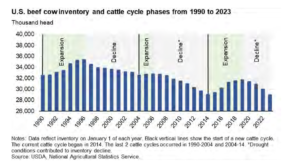
ERS noted that, “According to the USDA, National Agricultural Statistics Service (NASS), the U.S. cow herd began to contract during 2019…[and]…Since 2020, the year-over-year rate of inventory decline for beef cows has increased.”
Drought is one factor contributing to recent declines in the beef cow inventory.
This week’s update stated that, “Dry conditions impact forage availability for beef cattle that to a large extent rely on pasture and range as a food source.”
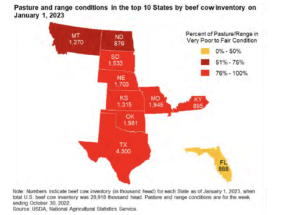
“Based on beef cow inventories at the start of 2023, 92.9 percent of U.S. beef cows were in States where most of the pasture and range were in very poor to fair condition the week ending October 30, 2022 (the last report of the 2022 season).”
“Cattle producers may respond to poor pasture conditions by providing supplemental feed to maintain animals,” the ERS report said.
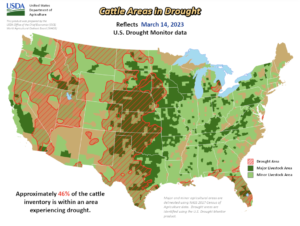
Regarding prices of supplemental feeds, ERS pointed out that, “Prices reported by NASS of non- alfalfa (other) hay during the July–September and October–December quarters averaged at record levels.”
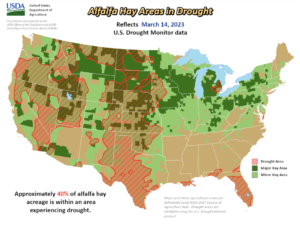
“As the cost of retaining cattle increases, producers may remove cows from the herd. Thus, droughts in cattle-producing States can contribute to herd contraction,” the report said.
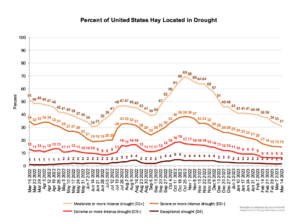
ERS added that, “Overall, drought has contributed to reduced pasture and range conditions and increased beef cow slaughter. Any changes to the current drought conditions will likely impact inventory numbers in the coming year.”





